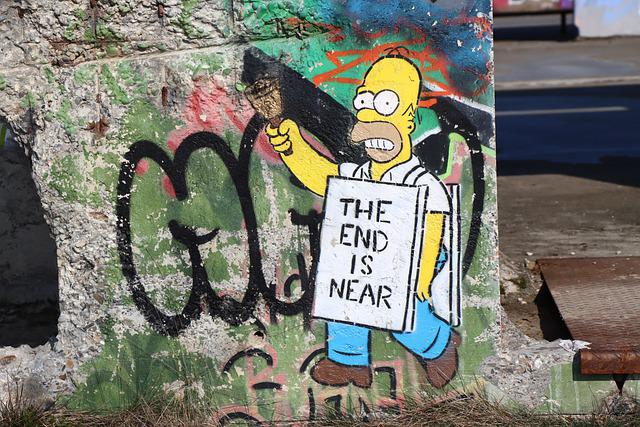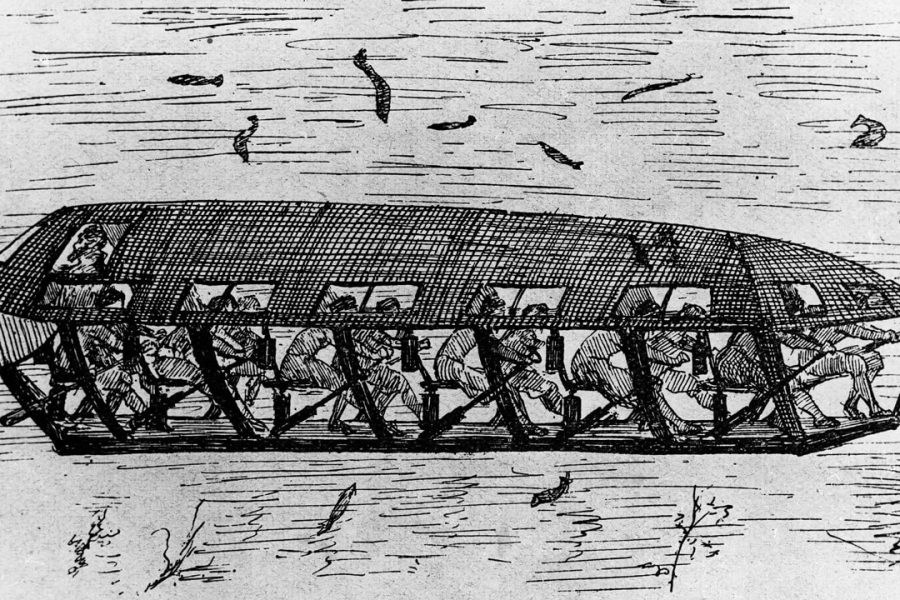You can trace the history of modern animation back to the 1830s and the phenakistoscope, which created the illusion of movement using images on a rotating cardboard disk. Nowadays, there are no statistics on how many cartoons have been made, because it is a nearly impossible task.
All the big studios like Walt Disney and Warner Bros make them, but people sitting at home on their computers can make them too. They're everywhere, and no matter how popular some of them are, there's still some great behind-the-scenes stuff you can learn, and the deeper you dig, the more controversial it becomes.
10. Popeye mumbled because he was animated before he was voiced.

Take a look at some old cartoons about Popeye in the 1930s, and you'll notice something curious. The dialogue often seems out of place in the show; the characters' mouths don't move, and the words just mumble. This wasn't an accident; rather, it was a way to compensate for the way the show was animated.
Popeye was drawn and animated before he was sent to record the voices. This meant that the voice actors had to write dialogue into what they were given, regardless of whether it worked or not. So Popeye and Bluto end up muttering to themselves all the time, simply because the cartoon was never animated with the intention of them speaking at all during those moments. Voice actor Jack Mercer simply improvised muttering with closed lips for fun.
9. Hanna-Barbera cartoons wore collars to make them easier to animate.
Animation is not an easy thing, and it was much harder in the past. A hand-drawn cartoon had to be assembled from literally thousands and thousands of images, each one slightly different from the one before it in order. Imagine drawing Mickey Mouse walking up the stairs 1,000 times in a row, with his feet going up a little higher in each image.
To save time and effort, animators learned to cut corners. One of these was very obvious in the early Hanna-Barbera cartoons, in which every character seemed to have a collar and tie. When Yogi Bear wore a tie, it meant that his body could remain static, and needed to be animated just his head . This was the result budget cuts, that cartoon creators had to deal with when working on television. As a result the cartoon could have been made using just 2000 drawings instead of the usual 14,000.
8. Four-fingered cartoons saved millions of dollars

From time to time in "The Simpsons" the character is talking to God, and you may have noticed that God has five fingers , and everyone else in the universe has four. You may also have noticed that over the years, most cartoon characters have had four fingers instead of five.
Although this is not a problem today thanks to computers, in the days of hand-drawn animation, creating a fifth finger was hard work. It also threw off the geometry of the figures, which were mostly based on a series of circles . The extra fingers made characters like Mickey Mouse look odd and harder to draw. Also, since many of the early characters were not actually human, they did not need to have five fingers. And the ring finger actually costs more money to animate because they have to spend more time and effort to make it move. Walt Disney is said to have estimated the savings from using four fingers to be in the millions of dollars range.
7. ThunderCats hired a psychologist to test each scenario
If you ever thought that 80's cartoons were just mindless entertainment or an excuse to sell action figures, think again! At the very least, ThunderCats were there to teach children morals, and they even had psychologist on board to make sure this happened.
Dr. Robert Kuisis was hired to review all scripts and provide feedback based on areas of concern violence and morality . This was done in 1985, when violence and overt marketing to children in cartoons was causing serious controversy. concern in the media. Cartoons were often viewed under the microscope as being too violent or lacking any value for the children who watched them, so cartoon producers tried to present themselves as valuable before a critical backlash could occur.
6. Pepe Le Pew was an Italian in France
In 2021, Pepé Le Pew was dropped from the Looney Tunes roster after nearly 70 years. It turns out that a cartoon whose only gimmick is to relentlessly pursue a woman who desperately doesn’t want to be near him, then force himself on her when he catches her, isn’t exactly appropriate. But even before that, some wondered how a cartoon that seemed to mercilessly mock the French had survived for so long. What were the French even thinking?
It turns out that few French people didn't know there was a problem. In France, Pepé Le Pew wasn't French at all, he was Italian. Actor Francois Tavares made a French dub of Pepe le Putois, which means "the ferret", for the French audience with a strong exaggerated Italian accent, which allowed everyone to laugh at the stereotypes of another culture and language.
Note that this was not done to avoid offending the French. How could that happen? If they heard the character with a French accent, it wouldn't be offensive at all, it would be normal, and the joke would be ruined. So Pepe a new emphasis was needed in France, otherwise the whole joke would be lost. So, since he was a seducer, they chose Italian, which also carries this sexual stereotype.
5. Casey Kasem quit Scooby-Doo in protest of a Burger King commercial.
Original voice America's Top 40 , Casey Kasem was also the original voice Shaggy from Scooby-Doo . He started playing Shaggy in the 1960s and even voiced him in the 2010s shortly before his death. But there was a period of time when Kasem actually left the show in protest.
Between 1995 and 2002, Qasem refused to voice Shaggy after the characters were to be used in a Burger King commercial. Kasem, a vegan and staunch advocate of the lifestyle, was reportedly upset that Hanna-Barbera, the studio that created the cartoon, did not want to make Shaggy a vegan. To be fair, one of Shaggy's gimmicks over the years was that he had a voracious appetite and could eat almost anything.
Not only did Kasem give up advertising, but he also left the show entirely for 7 years. Only when the producers gave in and agreed to make Shaggy a vegetarian, he returned.
4. Cartoons like GI Joe added public service announcements to appease critics and appear educational.
If you were a child of the 1980s, you are probably familiar with the phrase "knowing is half the battle." Made famous by the soldier Joe , which is how each 30-second commercial added to the episode ended.
Why waste 30 seconds of precious cartoon airtime on public service announcements? Strategy. G.I. Joe , as well as Transformers And He-Man , was essentially a 30-minute action figure commercial. It was designed to sell toys, and to do so, it used the opportunity to blow his enemies to smithereens. The show's creators knew that this could be a problem, which they solved with ThunderCats, so to cut off criticism on the way in, they made it "educational." A little commercial to give the show value. It was a step up from just having a doctor on staff. Now the value of the show was clear.
The social advertising was observed by a doctor from the Harvard School of Education and Human Development and was tested National Council for Child Safety. You could make a strong case that it was related to the general trend of television critics at the time, the same culture that led to the children's television 1990s , which required television stations to ensure that a percentage of children's programming was educational in nature. Shortly thereafter, that same law may have been used when channels applying for renewal of their broadcast licenses included G.I. Joe V list educational programs .
3. Costco and Disney's Ratatouille Wine violated advertising rules

Cross-promotional movies are nothing new: Every big summer release is almost guaranteed to be linked to a fast food restaurant chain somewhere. They even sold bagged salad featuring Star Wars characters for the last three installments of the film series. So when Disney was going to promote the film in 2007, "Ratatouille" , it wasn't strange for them to try to team up with Costco.
The problem with the partnership in this case was what the two companies decided to do. They were making wine called Ratatouille. The movie was about a rat chef, so it wasn't crazy. But it was a violation. advertising standards Wine Institute , which have existed since 1949.
Despite the presence 500 boxes chardonnay to sell as a cartoon rat wine, the whole scheme was a violation of wine advertising rules. Their code prohibits any advertising that could be construed as appealing to children, and it's hard to do more to appeal to children than by slapping a cartoon rat from a box-office hit on the label. The plan had to be abandoned, even though the winery was French and not subject to those special rules that only apply in California.
2. Clone High was cancelled due to protests in India
In the early 2000s Clone High debuted first in Canada and then on MTV. The adult cartoon depicts a high school where all the students are clones of major historical figures. So far, so good. However, it was cancelled shortly after massive and very serious protests in India, in which 100 people, including members of the Indian government, declared hunger strike .
MTV immediately apologized and informed the show's creator that the mattermade . They even removed all mentions of the show from their website, just in case. But what could have caused such a stir around the cartoon? Especially in a country where the series was not even broadcast? Gandhi.
Gandhi was a character in a TV series, and instead of portraying the man he was in real life, the creators decided to make him a party animal obsessed with drinking and sex. As you can imagine, this did not go over well in a place where he is revered as a national hero.
1. Betty Boop's look and sound were stolen from one singer who stole them from another.
If you know anything about classic cartoons, you're probably familiar with the character Betty Boop. Created in the 1930s, she resembled a clapperboard and spoke in a distinctive high-pitched voice. The character is generally considered one of the first animated sex symbols and still exists today, nearly a century later. However, many people don't know that Boop's producers sued actress Helen Kane for stealing her sound and look.
Kane sang a great song called " I want to be loved by you" in 1928, which later became much more famous thanks to Betty Boop. Boop's creator, Max Fleischer, even admitted that partially modeled the character modeled after Kane . Kane adopted this unique vocal style, a kind of baby talk that was still thought-provoking at the same time.
In 1932, Kane sued the studio for stealing its look and sound, and to this day the case seems pretty much open and shut. But you haven't heard about To little Esther .
Esther Jones was a singer before Helen Kane, known by her stage name Baby Esther. There is evidence that Kane saw Jones perform in the late 1920s, before she became famous. She sang at the Cotton Club in Harlem, and managed to create a persona that mixed those baby “boop” and “doop” sounds into a seductive musical performance. Video footage of Baby Esther’s old performances was used to prove that Kane was not the author as she claimed, and was essentially suing for the act she had stolen. Kane lost the lawsuit. Unfortunately, Baby Esther had disappeared by then and was presumed dead, so she never got to become the “real” face of Betty Boop.













Оставить Комментарий